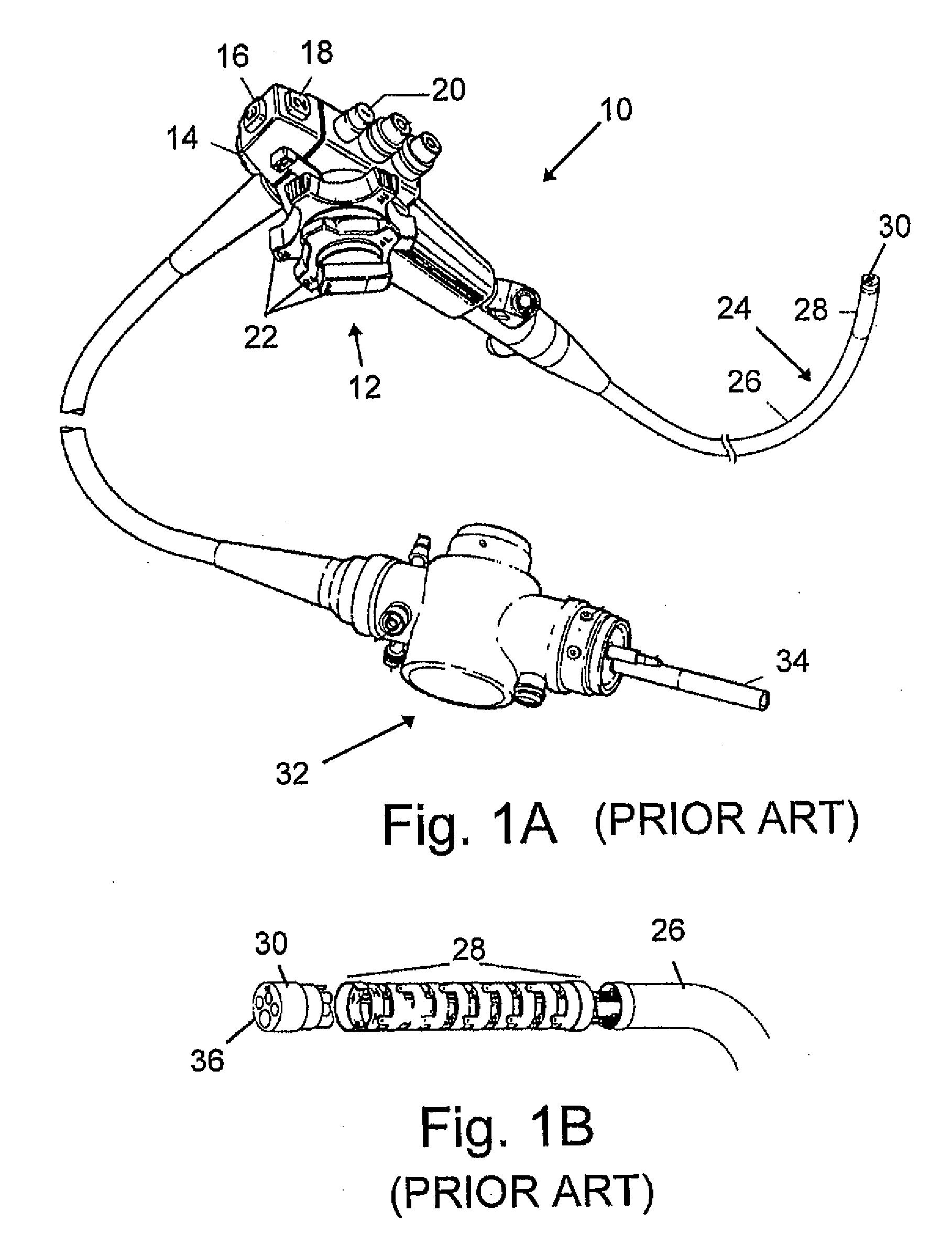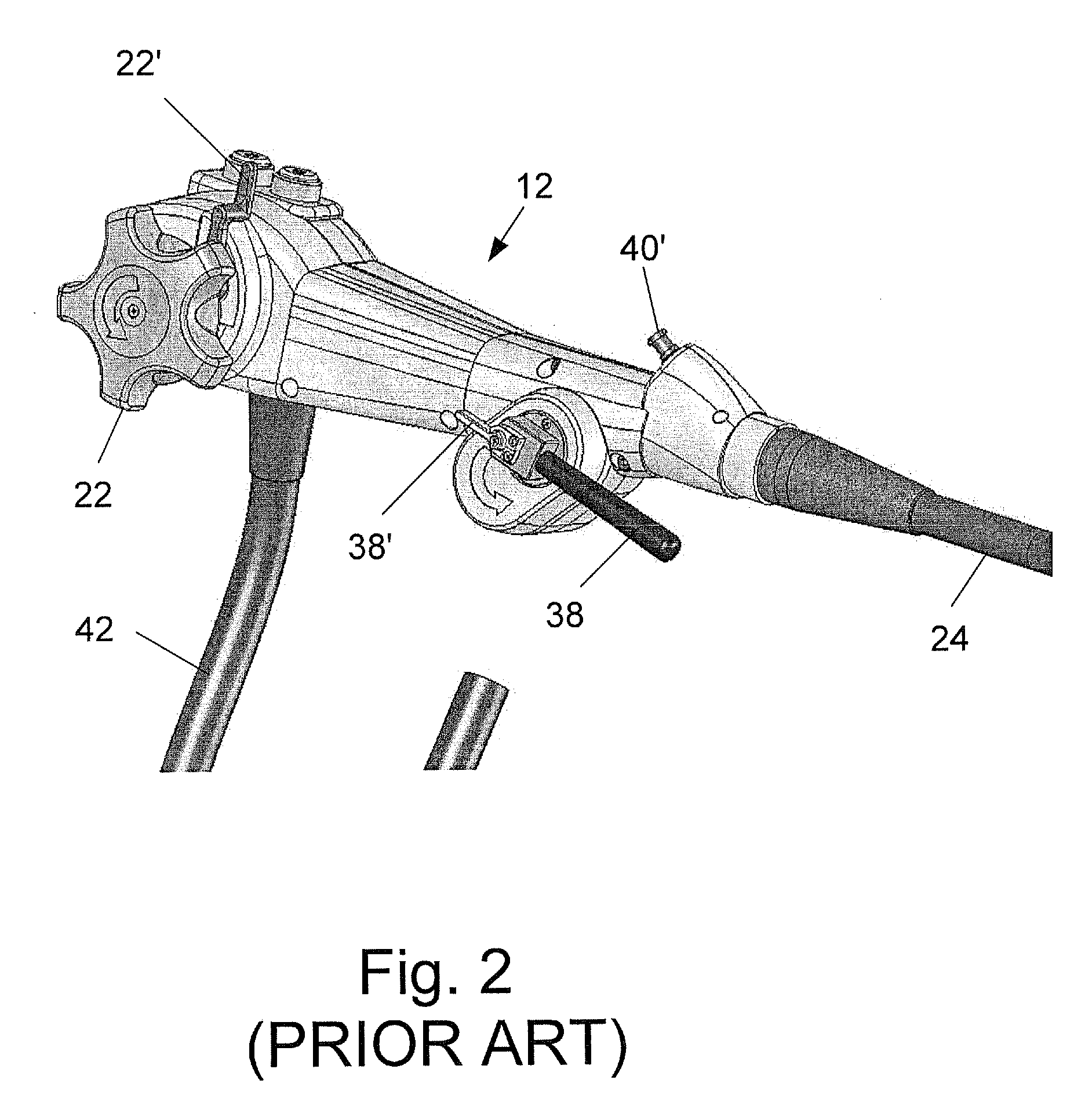Devices and Methods for Treating Morbid Obesity
a morbid obesity and endoscopic technology, applied in the field of medical devices, can solve the problems of increased surgical risk, increased health risk, and rising prevalen
- Summary
- Abstract
- Description
- Claims
- Application Information
AI Technical Summary
Benefits of technology
Problems solved by technology
Method used
Image
Examples
embodiment i
[0111]This is a transgastric method of applying a gastric band that creates a very similar anatomic outcome to the currently employed laparoscopic method but is carried out by introducing the band and all the surgical tools endoluminally. In this way the necessity of creating the minimum of five entry ports in the abdominal wall that are required in the laparoscopic method is eliminated. In addition, the procedure may be done under conscious sedation as gastroscopy is done, thus obviating the need for general anesthesia which is the norm in laparoscopic surgery. The procedure is schematically illustrated in FIGS. 17A to 17D.
[0112]The endoscopic device that is suitable for carrying out this operation is an embodiment of the working channel endoscopes described above. All phases of the procedure are executed using visualization provided by the video camera on the distal tip of the endoscope. The adjustable band 100 is grasped in front of the distal tip 30 of the endoscope 10 by a forc...
embodiment 1
[0116]FIGS. 20A to 20E schematically illustrate the steps in performing a mini Gastric Bypass. An endoscope 10 having at least one working channel and a linear stapler 108 that applies two parallel lines of staples and video camera on its distal face is inserted into the stomach 200 through esophagus 210. A cutting tool introduced through the working channel is used to cut a hole in the wall of the upper part of stomach 200. The endoscope is then pushed transgastrically and articulated so that the jaws of the stapler face the exterior of the stomach (FIG. 20A). The jaws of the stapler are then closed grabbing the tissue and an array of staples are fired to make a double line of staples 110 below the hole in the stomach wall. A surgical knife (not shown) in the stapler is activated to cut the tissue between the lines of staples. The jaws of the stapler are then opened, the endoscope is moved forward until more of the stomach is between the walls, the jaws are closed, a second array i...
embodiment 2
[0118]FIGS. 21A to 21C illustrate a second way of endoscopically performing a mini Roux-en-Y Gastric Bypass. Instead of starting the procedure by introducing the endoscope transorally, an endoscope is introduced through the anus into the colon. A hole is made in the wall of colon 220 and an endoscopic device 10 comprising linear stapler 108 is pushed out through the hole and advanced until it is facing the stomach (FIG. 21A). The stomach is bisected as described with respect to embodiment 1 (FIG. 21B). After the stomach is completely bisected to separate pouch 214 from the remainder of the stomach 200′, the endoscope with the linear stapler is withdrawn (FIG. 21C). The procedure is completed by introducing a working channel endoscope through the hole in the colon to bring a loop of intestine 218 (transected as a Roux limb or not transected as in a mini gastric bypass) to the pouch. In this trans colon approach the operating tools are already in the abdominal cavity, therefore the en...
PUM
 Login to View More
Login to View More Abstract
Description
Claims
Application Information
 Login to View More
Login to View More - R&D
- Intellectual Property
- Life Sciences
- Materials
- Tech Scout
- Unparalleled Data Quality
- Higher Quality Content
- 60% Fewer Hallucinations
Browse by: Latest US Patents, China's latest patents, Technical Efficacy Thesaurus, Application Domain, Technology Topic, Popular Technical Reports.
© 2025 PatSnap. All rights reserved.Legal|Privacy policy|Modern Slavery Act Transparency Statement|Sitemap|About US| Contact US: help@patsnap.com



